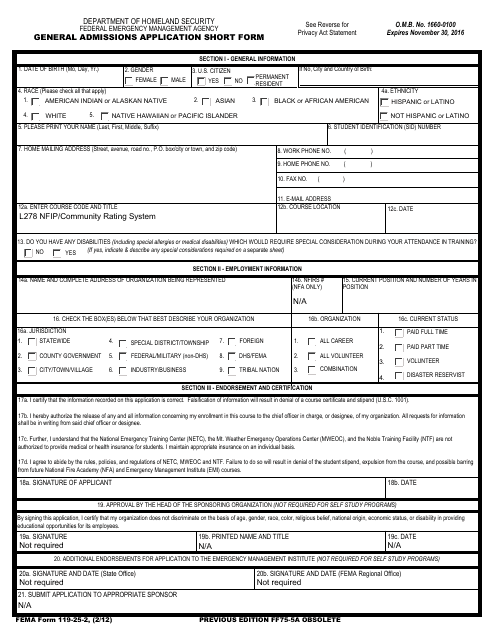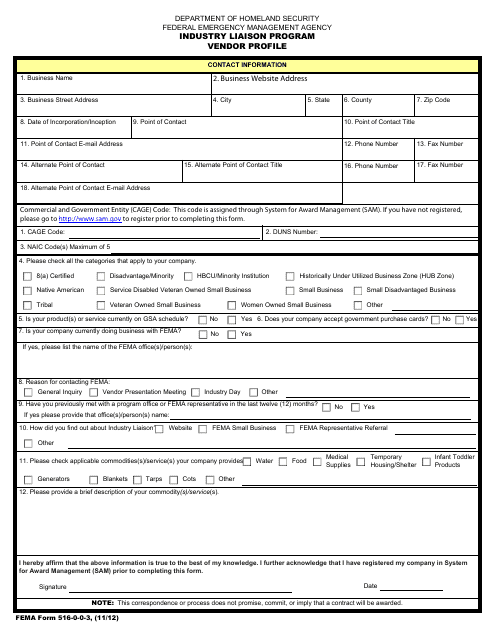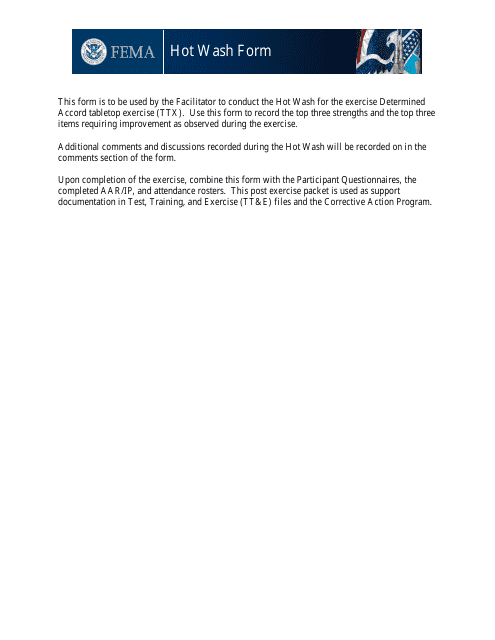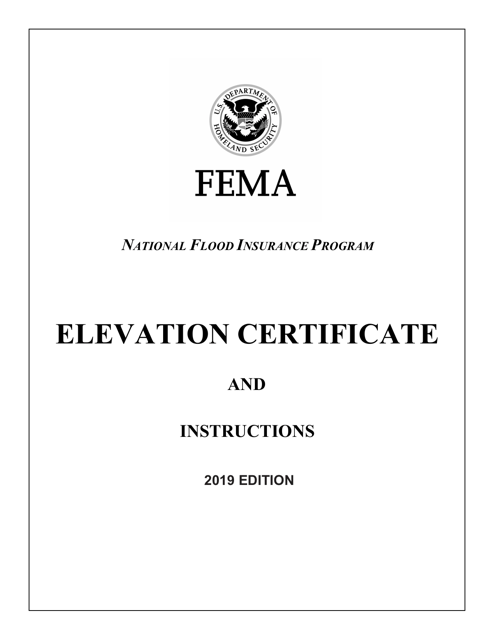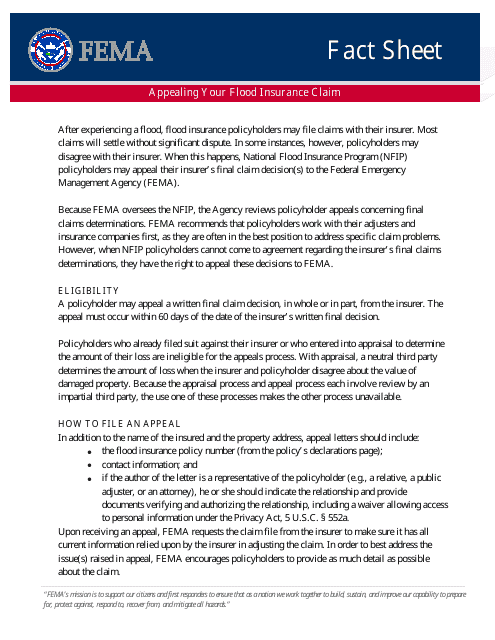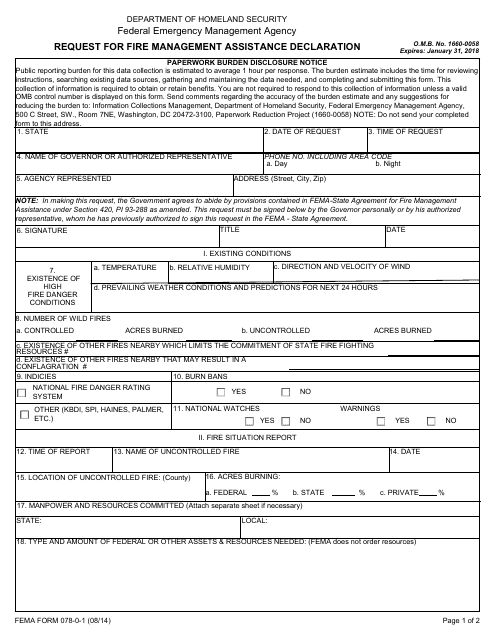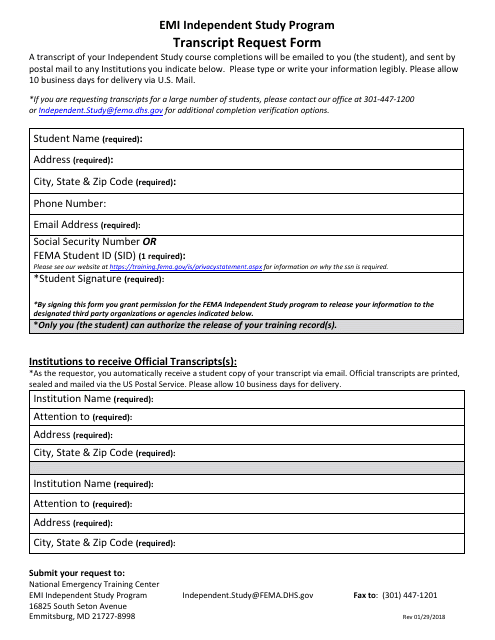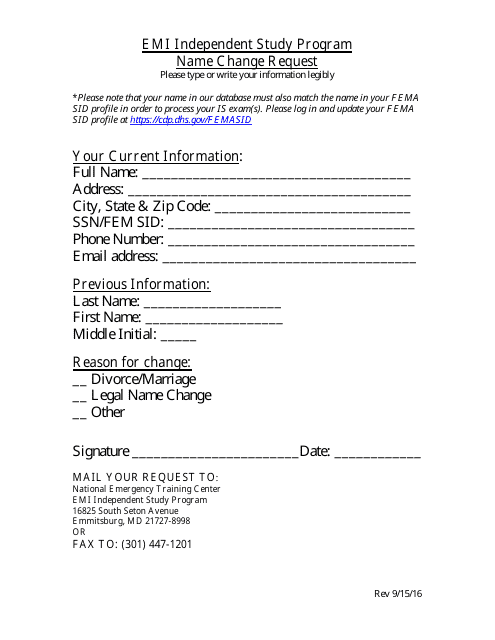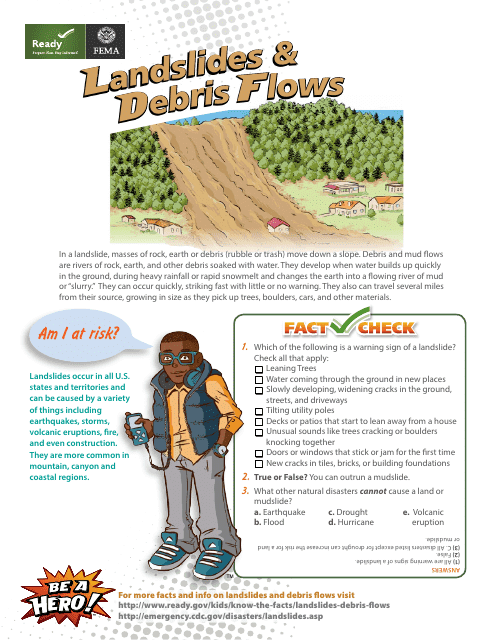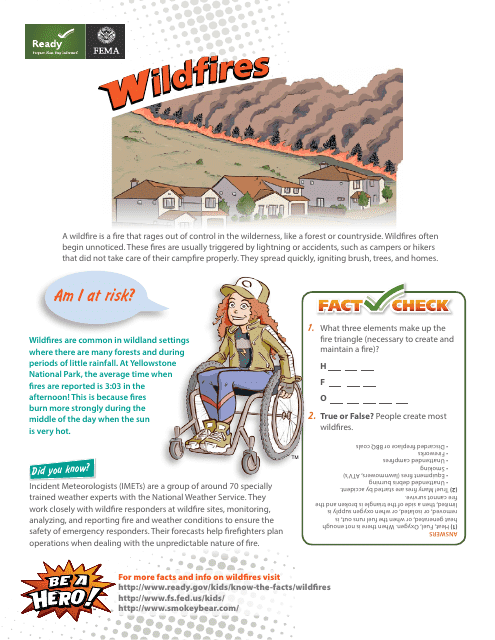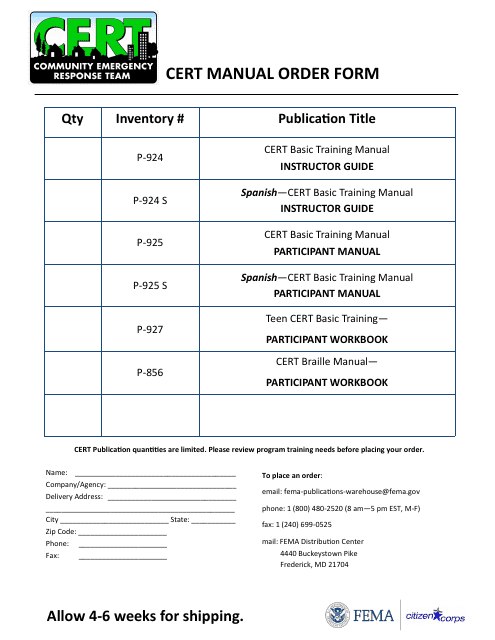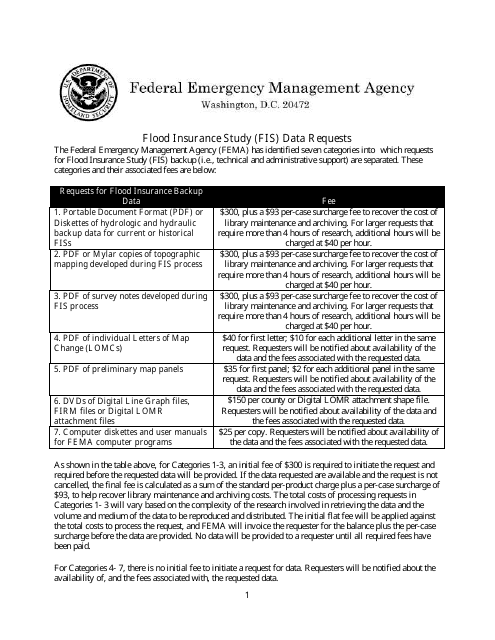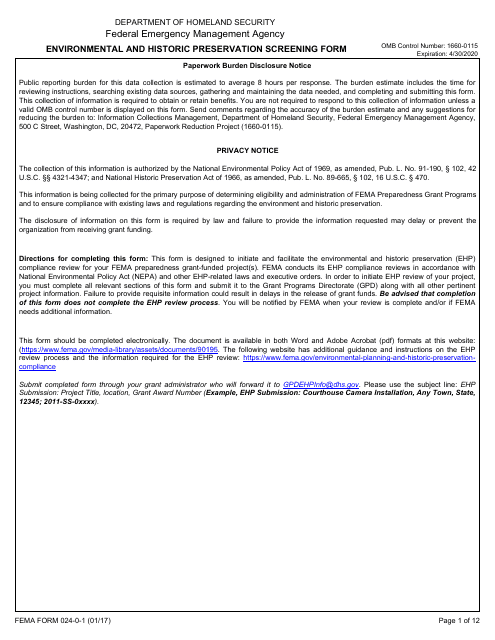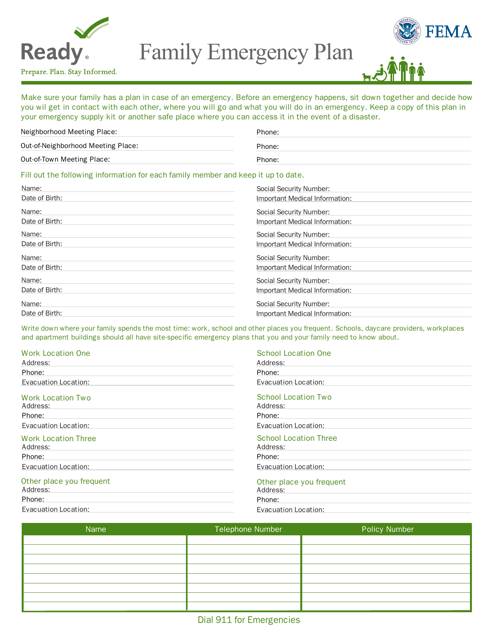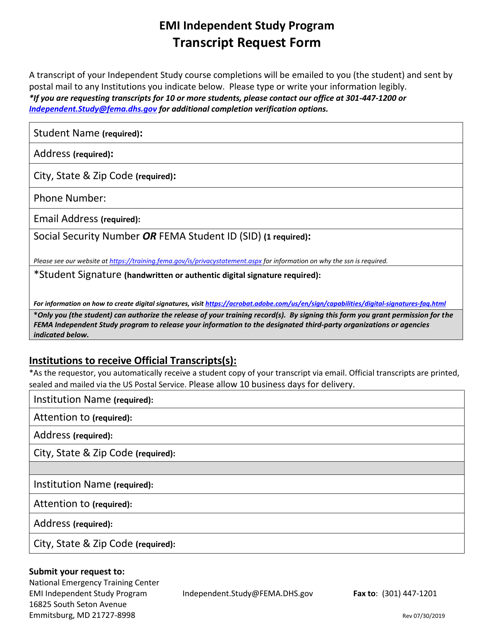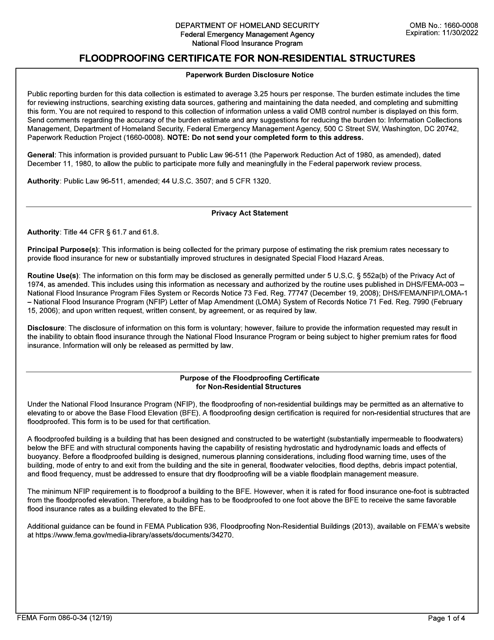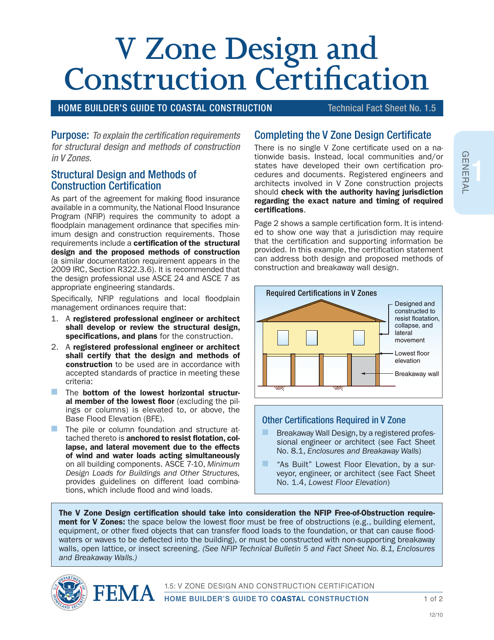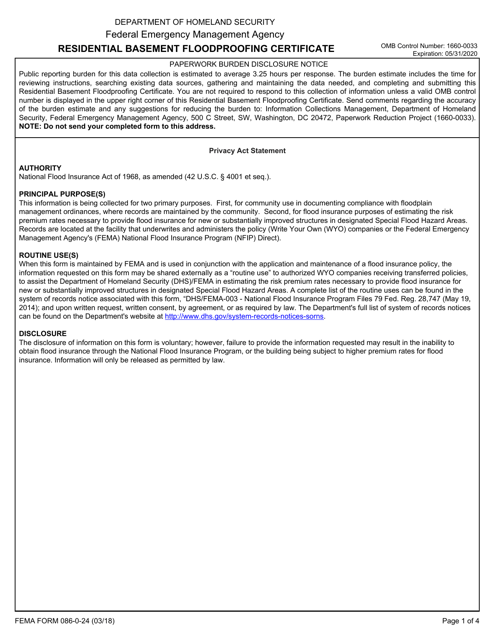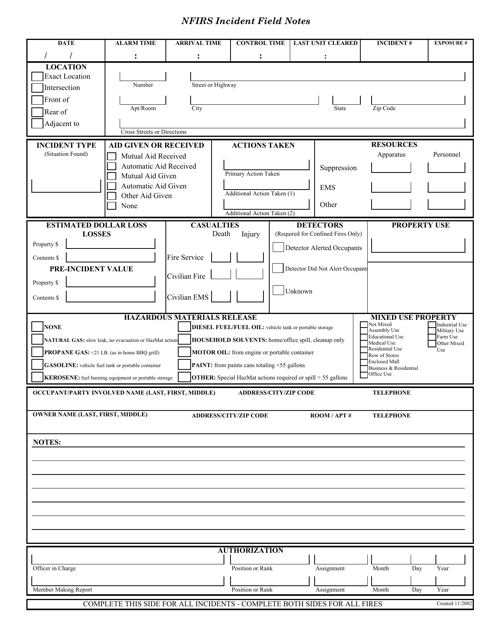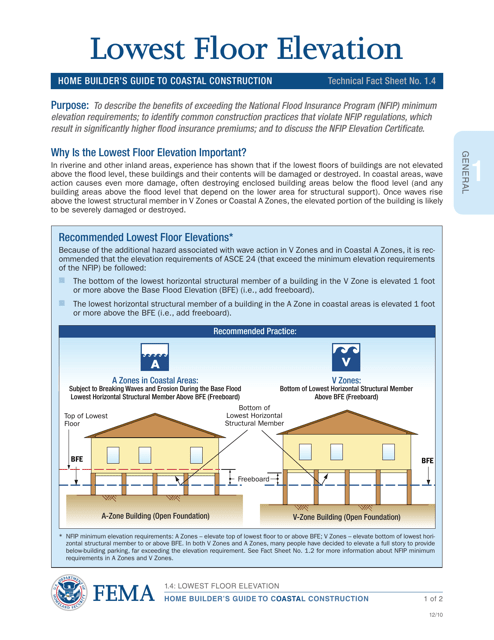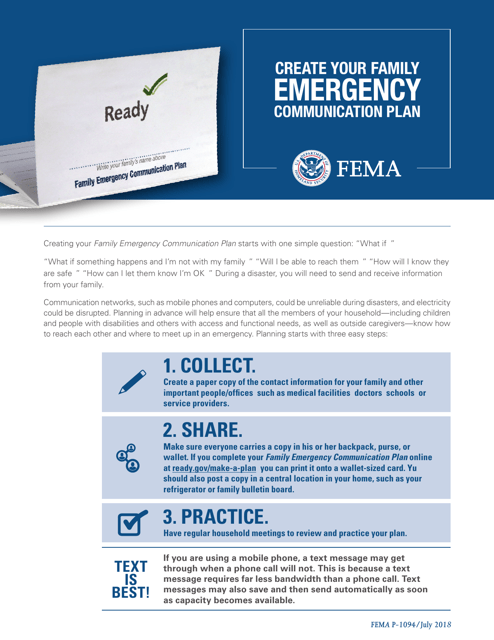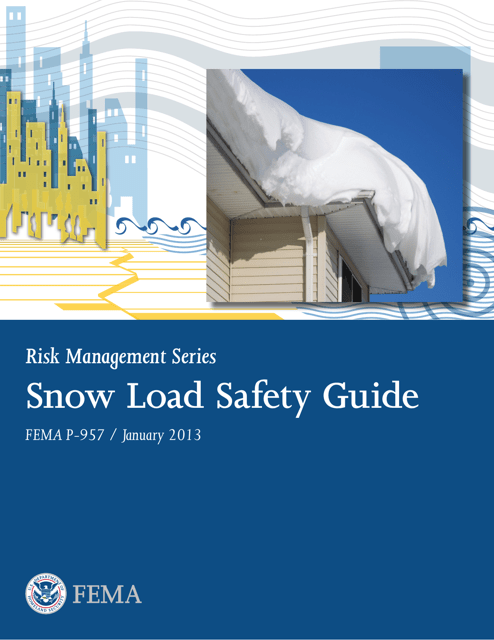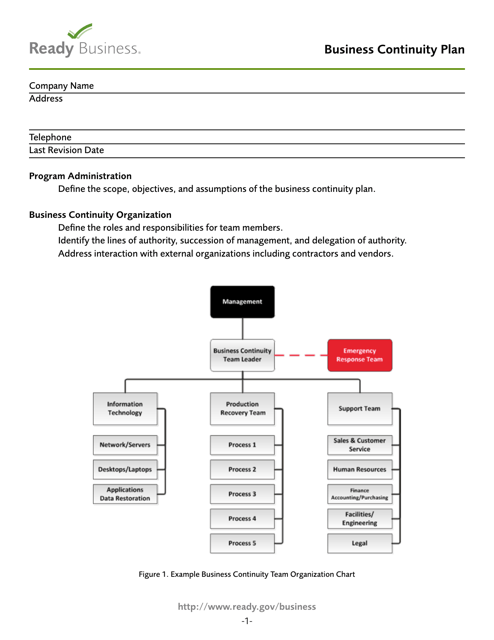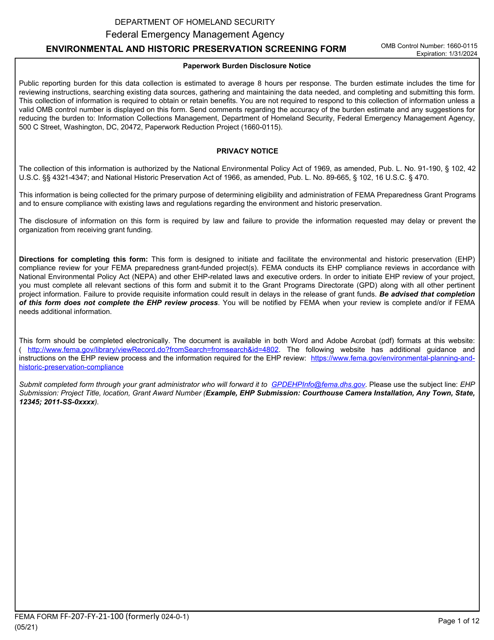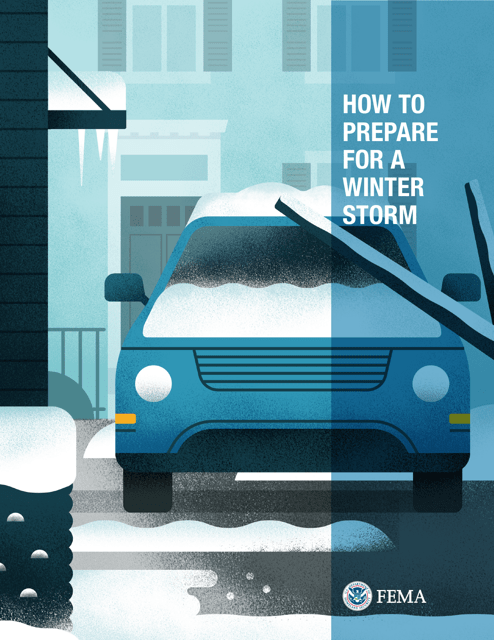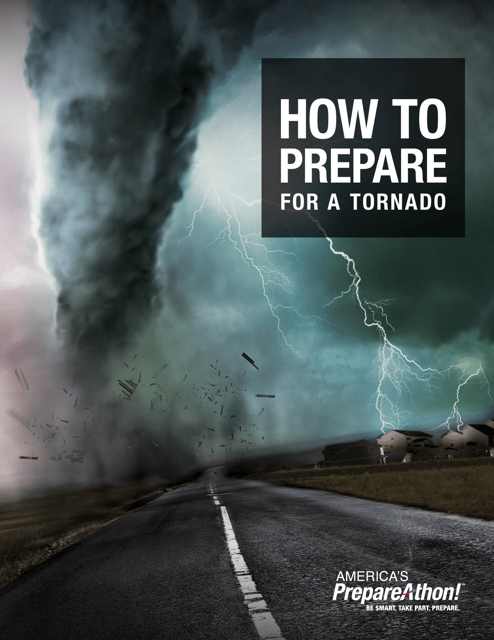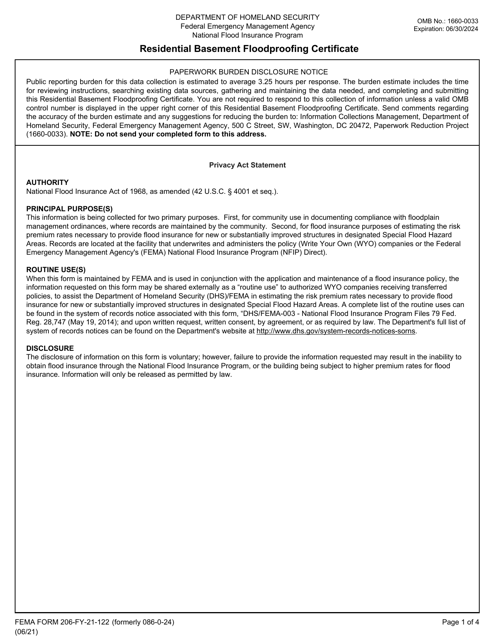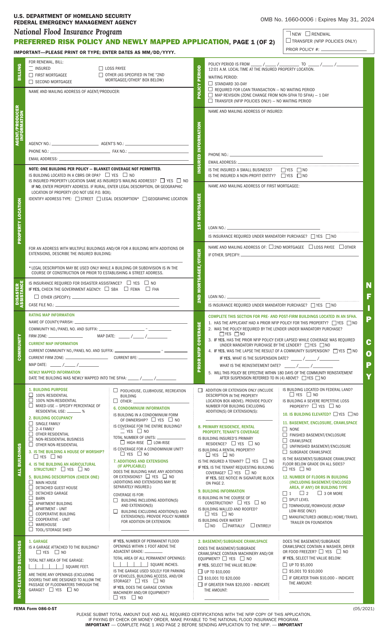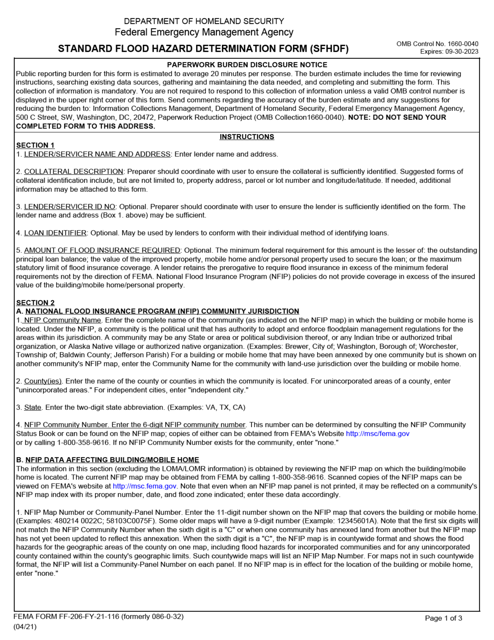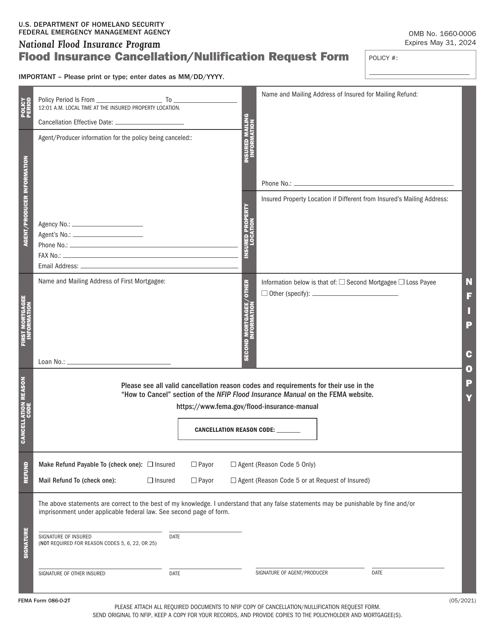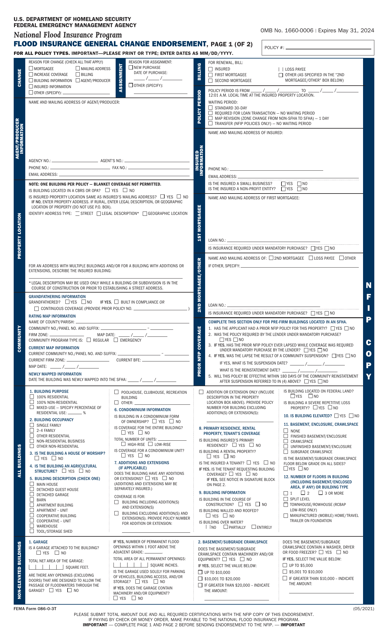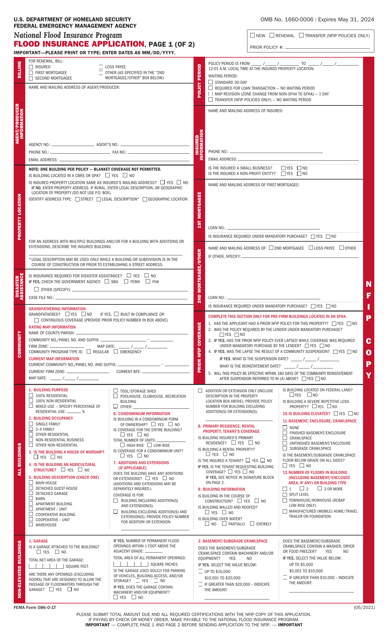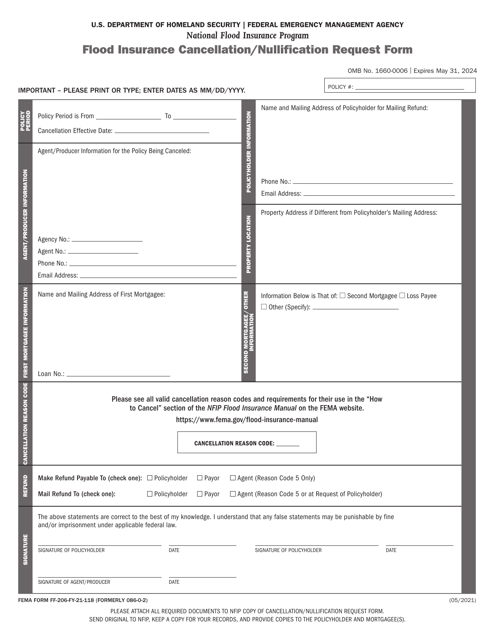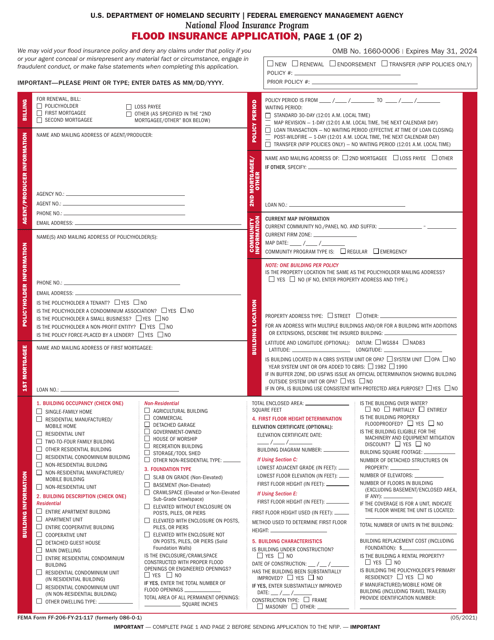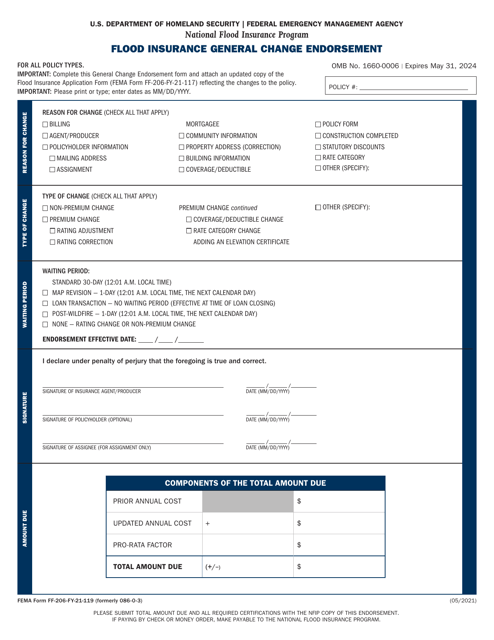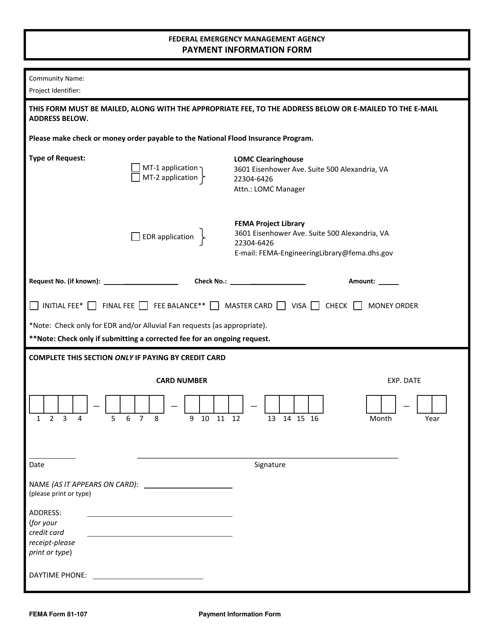U.S. Department of Homeland Security - Federal Emergency Management Agency Forms
The U.S. Department of Homeland Security - Federal Emergency Management Agency (FEMA) is responsible for coordinating and responding to emergencies and disasters in the United States. Their main aim is to provide assistance and support to individuals, communities, and government entities before, during, and after emergencies, such as natural disasters, terrorism incidents, or other catastrophic events. FEMA's efforts include disaster preparedness, response, recovery, and mitigation, working towards creating a safer and more resilient nation.
Documents:
149
This Form is used for submitting a general admissions application to FEMA in a shorter format.
This form is used for the FEMA Industry Liaison Program to gather information about vendors.
This Form is used for reporting the outcomes and lessons learned from a military exercise or training session.
This Form is used for appealing your flood insurance claim.
This document is used for requesting a declaration of fire management assistance from FEMA.
This document is a transcript request form for the Emi Independent Study Program. It is used to request official transcripts of academic records from the program.
This Form is used for requesting a name change in the Emi Independent Study Program.
This document provides important information and facts about landslides and debris flow. It covers the causes, signs, and potential impacts of these natural hazards.
This document provides essential information and tips about wildfires, including prevention, safety measures, and the role of FEMA (Federal Emergency Management Agency) in responding to and recovering from wildfire incidents.
This document provides a checklist of essential items and tasks for individuals to prepare for and survive during a disaster. It includes guidelines on emergency supplies, communication plans, and evacuation procedures. Use this checklist to ensure you are well-prepared in case of a disaster.
This form is used for requesting data related to the Flood Insurance Study (FIS). It is used to gather information for assessing flood risk in a specific area.
This document is used for assessing the potential environmental and historic preservation impacts of a project or activity. It helps FEMA determine if any additional review or permits are needed to comply with environmental regulations.
This document helps you create a plan for your family in case of an emergency situation. It includes important contact information, meeting points, and instructions on what to do during different types of emergencies.
This form is used for requesting an independent study transcript for EMI.
This Form is used for certifying the floodproofing measures taken for non-residential structures to ensure their protection against flooding.
This document certifies that a building or structure has been designed to meet the requirements for V Zone, which refers to areas susceptible to high velocity wave action during a flood or coastal storm.
This document is used for certifying that a residential basement has been floodproofed according to FEMA guidelines.
This document is a guide provided by FEMA (Federal Emergency Management Agency) that explains how to apply for assistance under the Individuals & Households Program after a disaster. It provides information on the types of assistance available and the application process.
This document is used to record field notes during incidents according to the National Fire Incident Reporting System (NFIRS). It helps capture important details and information about the incident for accurate reporting and analysis.
This document provides guidance to home builders in coastal areas regarding the required lowest floor elevation for construction. It offers important information on how to determine the appropriate elevation level to mitigate the risk of flooding and other coastal hazards.
This document provides guidelines and safety measures for dealing with heavy snow loads on roofs and structures.
This document outlines the procedures and protocols a business has in place to ensure its operations can continue in the event of a disruption or emergency. It includes measures to minimize downtime, protect sensitive data, and ensure employee safety.
This Form is used for environmental and historic preservation screening in relation to FEMA activities.
This document provides instructions and tips on how to prepare for a winter storm. It includes essential steps to ensure your safety and well-being during severe winter weather conditions.
This document provides a step-by-step guide on how to prepare for a tornado. It includes tips on creating an emergency kit, making a family emergency plan, and identifying safe locations in your home or community during a tornado.
This Form is used for certifying that a residential basement has been floodproofed according to FEMA guidelines.
This form is used for applying for a Preferred Risk Policy and Newly Mapped Application under the Legacy Rating Plan with FEMA.
This form is used for determining the flood hazard status of a property. It is used by FEMA to assess the risk of flooding and determine if flood insurance is required.
This Form is used to request cancellation or nullification of flood insurance policies under the Legacy Rating Plan.
This document is used for making changes to a flood insurance policy under the Legacy Rating Plan. It is a form provided by FEMA.
This type of document is a FEMA form used for applying for flood insurance under the Legacy Rating Plan.
This document is used for requesting the cancellation or nullification of flood insurance in the National Flood Insurance Program (NFIP) using the Risk Rating 2.0 pricing methodology.
This Form is used for applying for flood insurance through the National Flood Insurance Program (NFIP) using the new Risk Rating 2.0 Pricing Methodology.
This document is for making changes to National Flood Insurance Program (NFIP) policies using the Risk Rating 2.0 Pricing Methodology.
This form is used for providing payment information to FEMA for various services or reimbursements.

